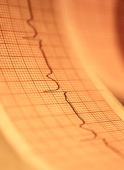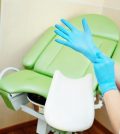- Tips for Spending Holiday Time With Family Members Who Live with Dementia
- Tainted Cucumbers Now Linked to 100 Salmonella Cases in 23 States
- Check Your Pantry, Lay’s Classic Potato Chips Recalled Due to Milk Allergy Risk
- Norovirus Sickens Hundreds on Three Cruise Ships: CDC
- Not Just Blabber: What Baby’s First Vocalizations and Coos Can Tell Us
- What’s the Link Between Memory Problems and Sexism?
- Supreme Court to Decide on South Carolina’s Bid to Cut Funding for Planned Parenthood
- Antibiotics Do Not Increase Risks for Cognitive Decline, Dementia in Older Adults, New Data Says
- A New Way to Treat Sjögren’s Disease? Researchers Are Hopeful
- Some Abortion Pill Users Surprised By Pain, Study Says
Implanted Monitor May Help Spot Dangerous Heart Rhythm After Stroke


Atrial fibrillation is a common and potentially deadly form of irregular heartbeat that’s often tough to detect. Now researchers say that an implantable heart monitor may help spot the disorder in patients who’ve suffered a unexplained stroke.
Atrial fibrillation “causes blood clots to form in the heart that ultimately travel to the brain and lead to a stroke,” explained Dr. Erik Altman, director of electrophysiology at North Shore-LIJ’s Southside Hospital in Bay Shore, N.Y.
He was not connected to the study, which was to be presented Friday at the American Stroke Association’s International Stroke Conference in San Diego.
According to background information provided by the study authors, people with atrial fibrillation have about a fivefold higher risk of stroke, but medicines can reduce that risk if the abnormality is spotted early on.
However, “atrial fibrillation can be difficult to detect due to its sometimes intermittent nature, and the fact that it isn’t always accompanied by symptoms,” study author Dr. Richard Bernstein, a professor of neurology at Northwestern University, said in a stroke association news release.
“For a patient who has had an unexplained stroke, it’s really important to determine if they have atrial fibrillation, because left untreated it could result in a second, and even more devastating, stroke,” he added.
The new study included 441 patients from 55 centers in North America and Europe with unexplained stroke. About half of them underwent standard testing, while the other half received a small heart monitor that was implanted under the skin and provided doctors with continuous data on heart rhythm for up to three years.
The Reveal XT monitor proved six to seven times more effective at detecting atrial fibrillation than standard testing, according to the study , which was paid for by the device’s maker, Medtronic.
After six months, atrial fibrillation was detected in nearly 9 percent of patients with the implantable monitor, compared to 1.4 percent of those who had standard testing. After one year, those rates were 12.4 percent and 2 percent, respectively. After three years, the rates were 30 percent and 3 percent, respectively.
“Finding atrial fibrillation after a stroke changes therapy from the aspirin class of drugs, which are not very effective in atrial fibrillation, to anticoagulants [stronger blood thinners],” Bernstein explained.
Ninety-seven percent of the patients in the study who were found to have atrial fibrillation were prescribed blood thinners.
Another expert noted that cardiac monitors have been around for a while.
“The technology has been available for several years and is useful for the detection of heart rhythm disturbances that are too infrequent to be found using conventional methods, such as an electrocardiogram or a heart monitor that is worn for a day or two,” explained Dr. Kenneth Ong, interim chief of cardiology at The Brooklyn Hospital Center in New York City.
“Because it is inserted under the skin, the monitor continually senses each heartbeat and can detect abnormal rhythms over long periods of time,” added Ong, who was not involved with the new study.
He called the implantable monitor “another tool that physicians can use in evaluating patients with a recent stroke. ”
However, Ong also cautioned that every medical technology carrries some level of risk.
“As the study also reports, this is an invasive approach and therefore has complications such as infection and breakdown of the tissue around the monitor,” he said. “It should not be the first test for these patients, but needs careful evaluation before recommending its use.”
In the study, 2 percent of the devices were removed because of complications.
Findings presented at medical meetings are typically considered preliminary until published in a peer-reviewed journal.
More information
The U.S. National Heart, Lung, and Blood Institute has more about atrial fibrillation.
Source: HealthDay
Copyright © 2024 HealthDay. All rights reserved.










